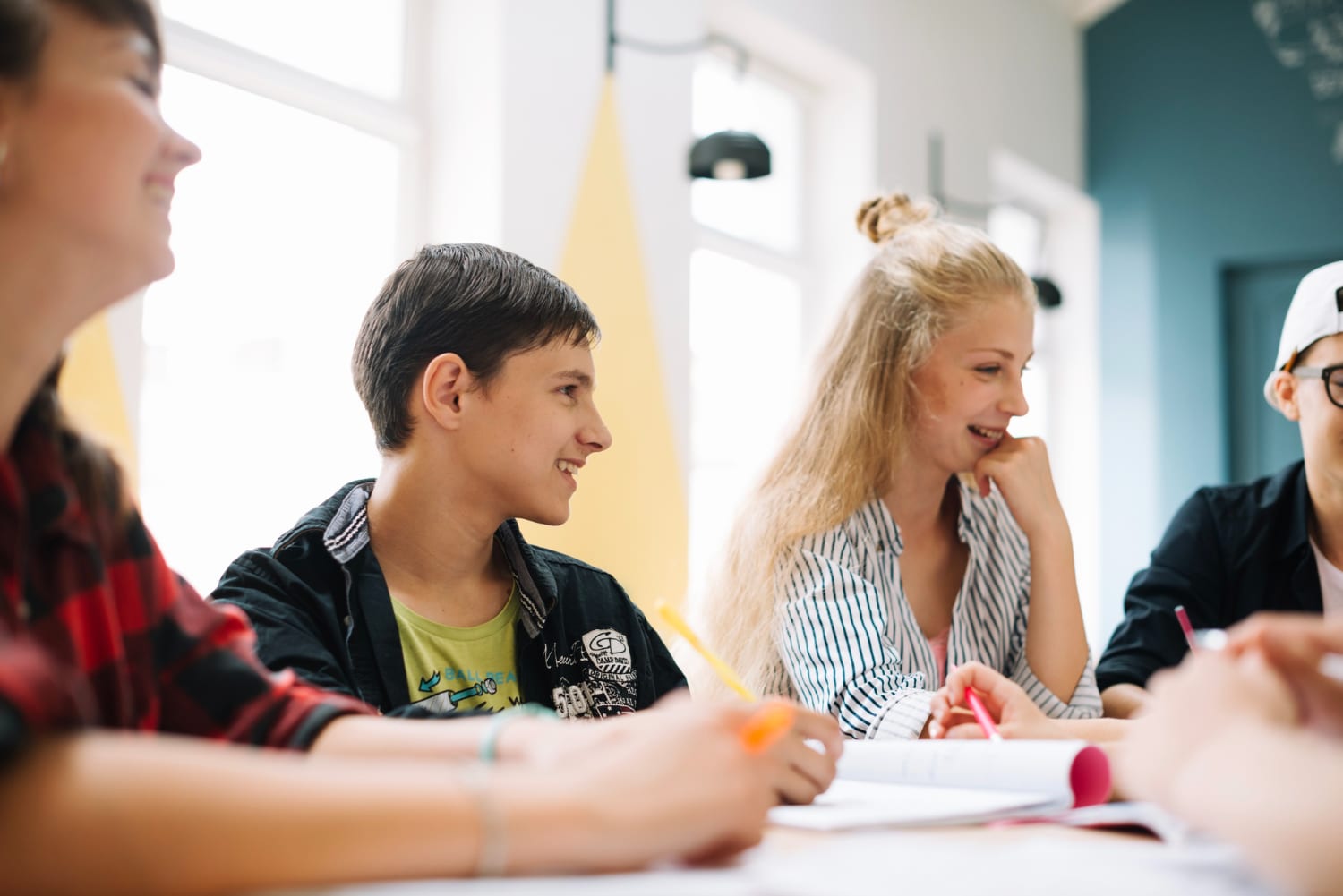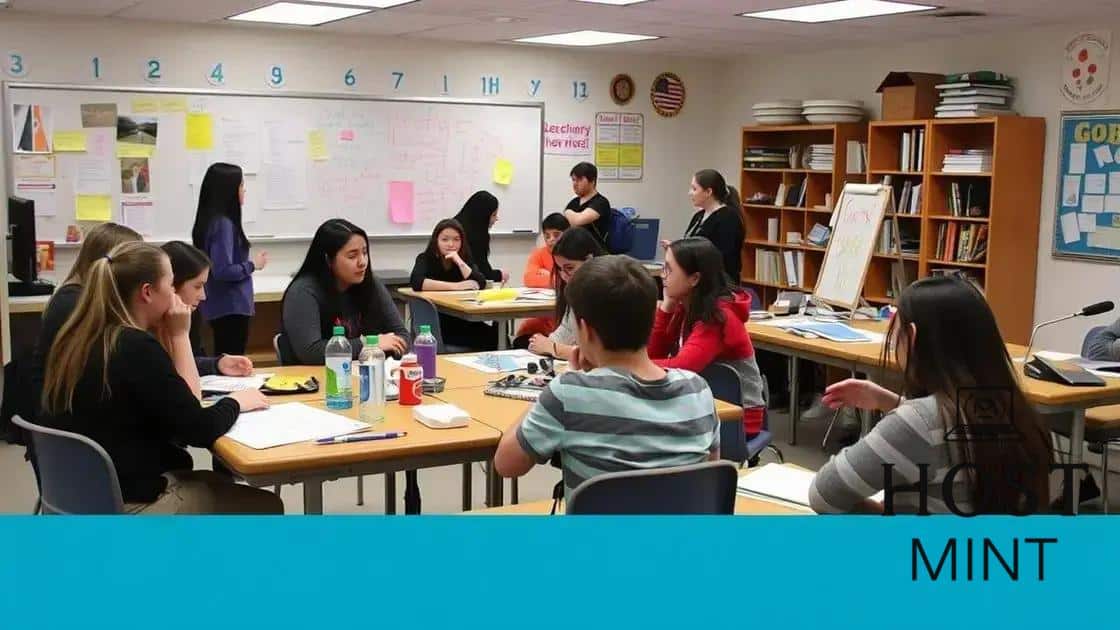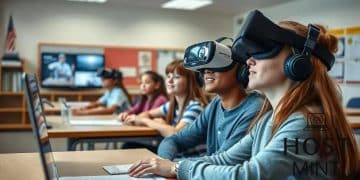The impact of standardized testing on student creativity

The impact of standardized testing on student creativity is significant, as it often emphasizes memorization over innovative thinking, leading to reduced creative expression among students.
The impact of standardized testing on student creativity raises important questions about how evaluations affect students’ imaginative abilities. Have you noticed how rigid frameworks can stifle innovative thought? In this article, let’s delve into this complex topic.
Understanding standardized testing
Understanding standardized testing is essential for grasping its impact on education. These tests aim to measure student performance and proficiency in various subjects. However, their design and implementation can often lead to unintended consequences that may hinder creativity.
Standardized tests usually focus on rote memorization and specific skills, which can limit students’ ability to think outside the box. This reliance on a narrow range of knowledge often overlooks the importance of creativity in learning.
Types of standardized tests
There are several types of standardized tests used in education:
- Achievement tests assess knowledge in specific subjects.
- IQ tests measure intelligence and cognitive abilities.
- Student placement tests help determine appropriate academic levels.
- Standardized state assessments evaluate overall student performance.
Each type serves a unique purpose, yet they all share a common structure that can restrict creative thinking. Students often feel pressured to perform well, leading to anxiety and a fear of failure.
The role of performance pressure
Performance pressure can detract from the joy of learning. When students believe their worth is tied to test scores, their natural curiosity may fade. It’s important to recognize how this pressure affects their creative abilities.
Finding a balance between assessment and creativity is crucial. Educators can create environments that encourage exploration and innovative thinking while still adhering to necessary testing requirements. By doing so, we can foster a generation of learners who embrace creativity alongside academic achievement.
Effects on creative thinking in students

The effects on creative thinking in students are significant in the context of standardized testing. Studies show that when students are focused on test-taking strategies, they often neglect to explore their creative potential.
When students spend much time preparing for exams, their ability to think outside the box diminishes. They tend to memorize answers instead of engaging in critical thinking. This situation can create a learning environment that prioritizes conformity over innovation.
Impact of test formats
The formats of standardized tests can also limit creativity. Most assessments rely on multiple-choice questions, which can constrain a student’s thought process. Students often feel compelled to select the “correct” answer instead of expressing their own ideas or interpretations, leading to a box-like mindset.
- Standardized tests often emphasize right or wrong answers.
- Such tests can discourage risk-taking in responses.
- Students may shy away from creative solutions if they fear lower scores.
- Limited formats reduce opportunities for students to showcase their unique perspectives.
Creativity is not just about artistic expression; it’s also about problem-solving. Therefore, promoting creative thinking is essential for students’ overall development. When students feel safe to express their ideas, they are more likely to engage deeply with learning materials.
Redefining success in education
Redefining success is key to nurturing creative thinkers. Rather than focusing solely on scores, schools should celebrate innovative approaches to learning. Schools that incorporate project-based learning allow students to explore subjects in ways that foster creativity.
By focusing on hands-on experiences, students can apply what they learn in real-world contexts. This method not only enhances retention but also encourages creative thinking. As students engage with their surroundings, they begin to think beyond standardized metrics.
Balancing tests with creative activities
Balancing tests with creative activities is crucial for fostering an effective learning environment. While assessments are necessary, they should not overshadow the importance of creativity in education.
Integrating creative activities into the curriculum can enhance students’ engagement and promote critical thinking. When students participate in creative projects, they often become more invested in their learning, leading to better retention of information.
Benefits of creative activities
Creative activities offer numerous benefits that can complement standardized testing:
- They encourage innovative problem-solving.
- Students develop collaboration skills through group projects.
- Engaging in art and creativity improves emotional well-being.
- Creative work can help students express their understanding in unique ways.
The key is to find a balance between traditional assessments and opportunities for creative expression. Educators can implement strategies that allow creative activities to flourish alongside test preparation.
Strategies for integration
Teachers can employ various strategies to harmonize testing and creativity:
- Incorporate project-based learning that involves real-world tasks.
- Allow students to demonstrate their knowledge through art or presentations.
- Use open-ended questions in tests to encourage creative responses.
- Create space for exploration and experimentation within the curriculum.
By blending creative activities with standardized tests, educators can foster a more holistic approach to learning. This balance not only prepares students for exams but also equips them with the skills necessary for life beyond the classroom.
Alternative assessment methods

Alternative assessment methods are vital for creating a more inclusive educational environment. These methods focus on evaluating students’ understanding and skills without relying solely on traditional testing formats.
Using diverse assessment strategies can support students in showcasing their strengths. Rather than limiting their abilities to multiple-choice questions, alternative assessments allow for a broader range of expression.
Types of alternative assessments
Several types of alternative assessment methods can be used in classrooms:
- Portfolios that showcase students’ work over time.
- Oral presentations to demonstrate understanding of a topic.
- Group projects that encourage collaboration and innovation.
- Performance-based assessments that involve real-world tasks.
These methods can provide valuable insights into a student’s skills, such as creativity, critical thinking, and collaboration, which standardized tests might overlook. They also encourage students to take ownership of their learning.
Benefits of alternative assessments
Alternative assessments help students engage in their learning process more actively. They promote a deeper understanding of concepts since students often have to apply what they’ve learned in new ways.
Flexibility is another significant benefit. Since students can express their understanding through various formats, it accommodates different learning styles. For instance, visual learners may thrive in projects involving art, while verbal learners may excel in presentations.
Furthermore, using alternative assessments reduces anxiety associated with traditional testing. Students can focus on demonstrating their knowledge without the pressure of high-stakes testing environments. Incorporating these methods allows educators to create a more supportive and effective learning atmosphere.
Recommendations for educators
Recommendations for educators are essential for creating an environment where creativity thrives alongside standardized testing. Educators play a critical role in balancing assessments and fostering innovative thinking.
By implementing certain strategies, teachers can support students in developing their creative skills while preparing them for necessary evaluations. Adjustments in teaching methods can help students see the value of both creativity and academic achievement.
Engage in active learning
Active learning techniques can significantly enhance students’ involvement. Rather than traditional lectures, educators should encourage students to participate in discussions, collaborative projects, and hands-on activities.
- Use real-life scenarios for problem-solving exercises.
- Encourage peer teaching to foster understanding.
- Incorporate games and simulations to make learning fun.
- Have students brainstorm and present their ideas as a team.
These methods not only make learning more dynamic but also help students apply their knowledge creatively. When students actively engage with the material, they are more likely to retain information.
Create a supportive environment
A supportive classroom environment is crucial for creativity. Teachers should celebrate risk-taking and innovative ideas, encouraging students to explore their thoughts without fear of judgment.
Incorporating feedback into the learning process can motivate students. Constructive feedback encourages a growth mindset, helping students understand that mistakes are part of learning.
Regularly providing opportunities for students to express themselves creatively can also boost confidence. Activities such as writing, art, and group projects should be encouraged alongside traditional assessments.
Educators should also explore integrating technology into creative projects. This approach can make learning relevant and exciting for students, preparing them for a digital world.
FAQ – Frequently Asked Questions about the Impact of Standardized Testing on Student Creativity
How does standardized testing affect student creativity?
Standardized testing can limit creativity by focusing on memorization rather than critical thinking, making students less likely to explore innovative solutions.
What are alternative assessment methods?
Alternative assessment methods include portfolios, projects, and presentations that allow students to showcase their understanding in diverse ways.
How can teachers foster creativity in the classroom?
Teachers can encourage creativity by using active learning techniques, integrating hands-on activities, and promoting a supportive environment that values innovative thinking.
Why are creative activities important alongside standardized tests?
Creative activities promote engagement, enhance understanding, and help students develop essential skills like problem-solving and collaboration, which are often overlooked in standardized tests.






